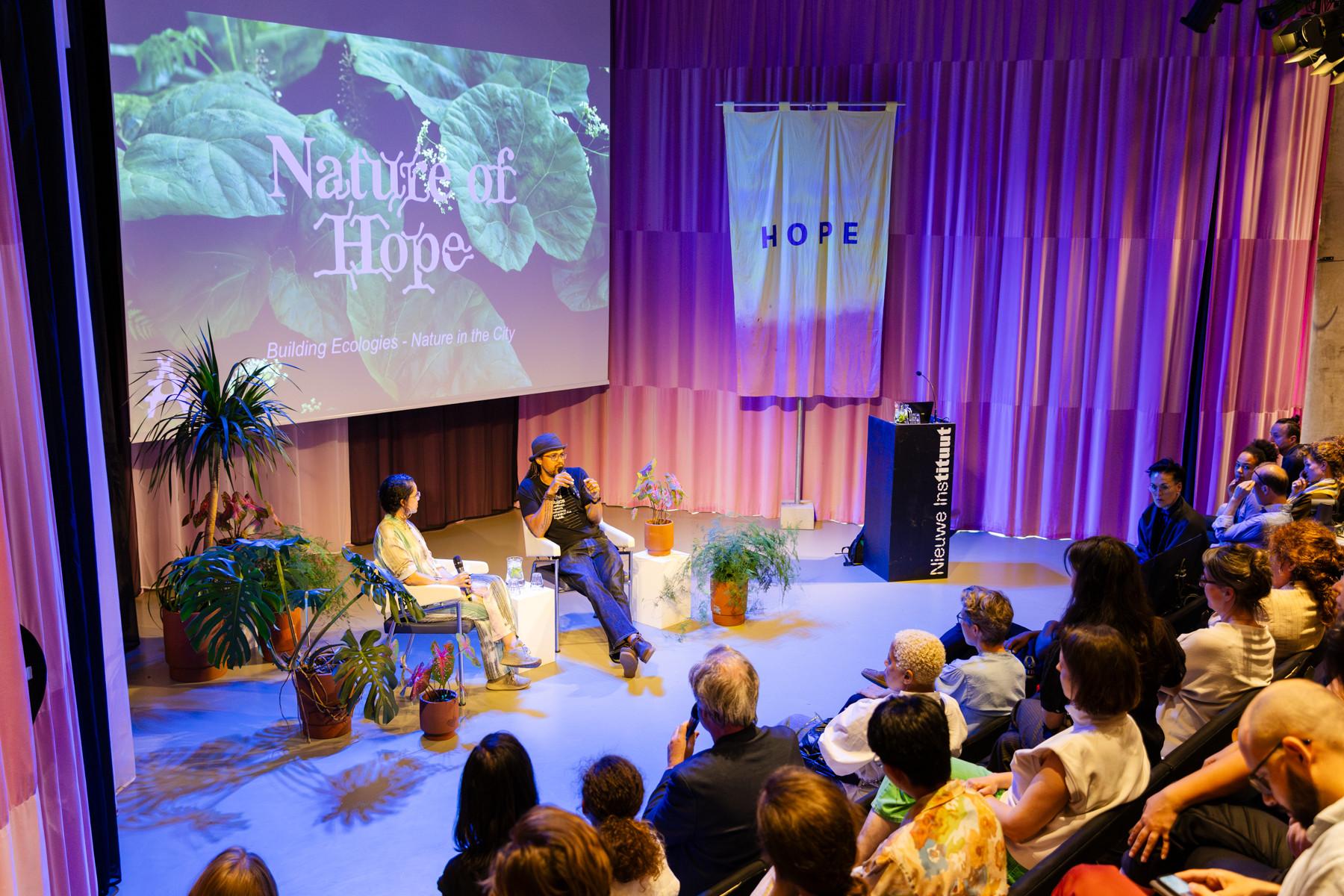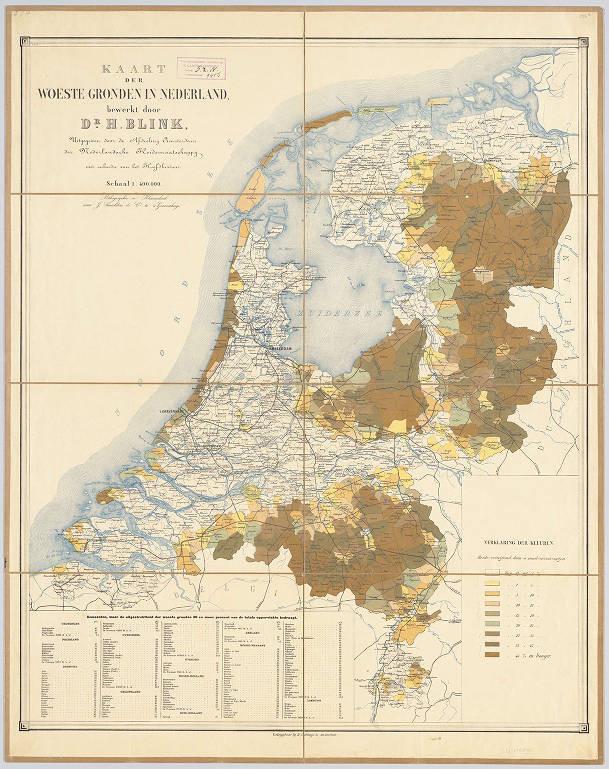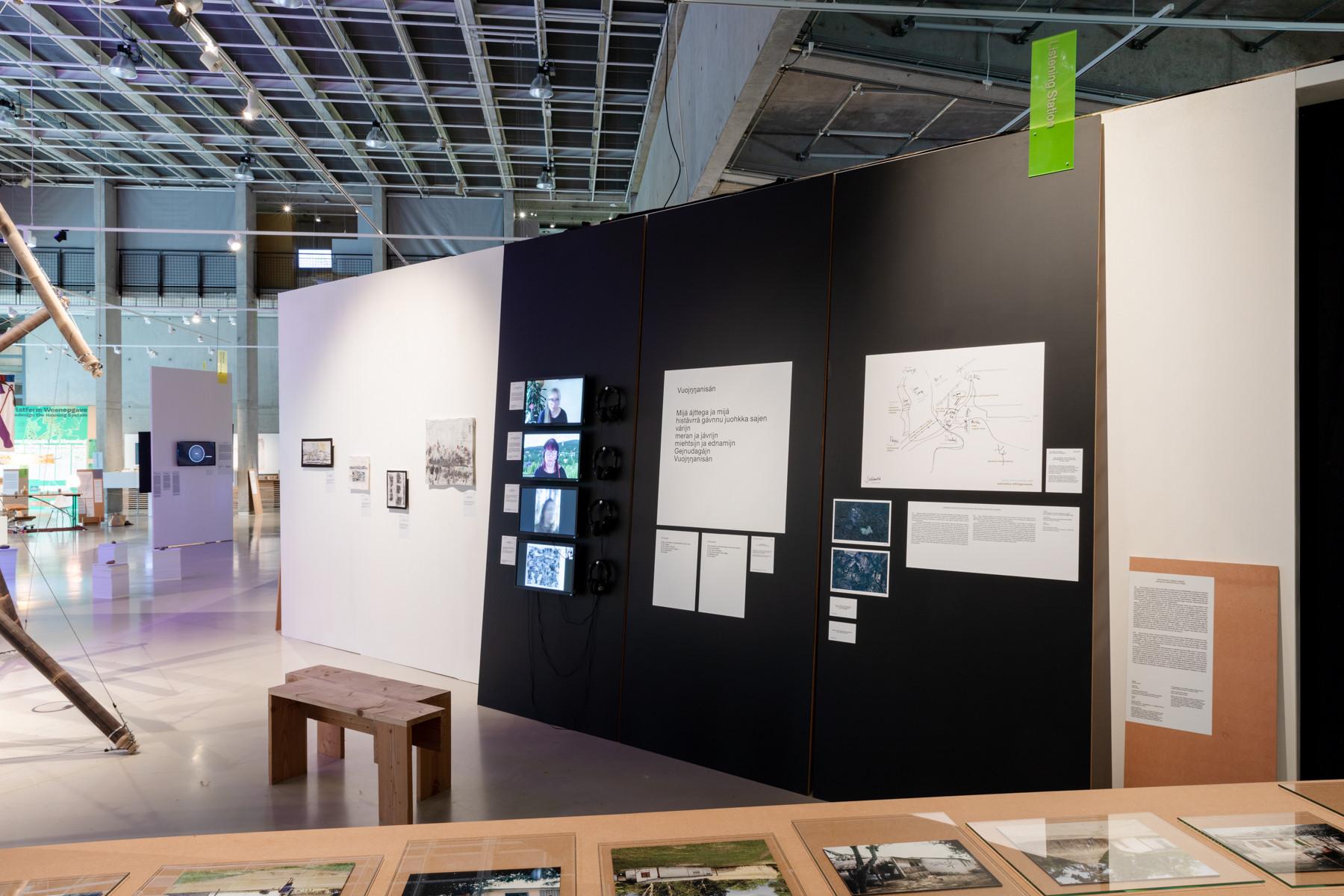Who builds towards a green future on a daily basis? To show how big ideas and visions find their way into reality, "Botanical Monuments" is part of this edition of the biennial: a collection of Rotterdams community initiatives around urban nature. They represent the ambition of the IABR to change the relationship between architecture and nature. But how does this ambition come to life in and around the city, who are the people behind big visions and what can we learn from them? Sabine and Jocelyn create the series "Hope Sowers" and engage with those taking steps towards an architecture that, in collaboration with nature, builds for future generations.
A stone's throw from Rotterdam, we find a rural polder area where agriculture, nature, and recreation go hand in hand: the Buijtenland of Rhoon. This vast area of six hundred hectares is the largest in the Netherlands where large-scale experiments with nature-inclusive agriculture are conducted. We spoke with Jeanette about this unique natural and agricultural area, just 10 kilometers from Rotterdam. Jeanette says, "It all started in 2010. The province of South Holland designated this area as compensation for the expansion of the Second Maasvlakte. The original plan was a freshwater clay wetland, but it did not sit well with the residents. Thus, in 2016, the Buijtenland of Rhoon Cooperative was born, a bottom-up initiative of recreation entrepreneurs, local farmers, nature preservation organizations and residents who wanted to do something with this area.”
A remarkable landscape, a multitude of landscape elements, diverse crops, and a multi-pillar business model: a unique example of how nature can be regenerative from various perspectives. For Jeanette, it is especially the love of cultivating both for people and nature that makes the area so special. "The farmers here are also nature conservators. The existing nature supports agriculture and contributes to the restoration and maintenance of biodiversity. Therefore, the landscape looks very different from traditional agricultural land. Forty percent of our area consists of natural measures such as winter food fields for birds, nature-friendly banks, and field flora, while the remaining sixty percent is intended for nature-inclusive agriculture. Besides products like onions, potatoes, sprouts, asparagus, apples, and pears, the farmers also cultivate cultural-historical crops such as false flax, various ancient grains, and flax. Instead of mass production, we bring back what was originally there in the landscape," says Jeanette.
The cooperative works with many organizations from Rhoon and consists of a diverse group of members, called Buijtenlanders, including nature associations, farmers, recreation entrepreneurs, and residents. One of the farmers in this area is Adjan Vos from De Vossenburg. "Adjan grows regular crops like sweet corn, potatoes, and asparagus, but also flax, sun crown, and elephant grass," Jeanette explains. "He shows that it can be done differently. Instead of creating a monoculture, he takes care of the environment, the soil, and the animals that live there." Jeanette emphasizes the importance of collaboration: "We try to ensure that farmers like Adjan also benefit financially by creating new local chains."
Jeanette hopes that a new target audience will discover the area and that the cultivated products will be used in innovative ways, aligning with new consumption patterns of the future. "In a world that is becoming increasingly global, we aim to inspire looking closer to home. Our goal is to tell our story and expand our community, starting with attracting consumers who become familiar with this area and eventually want their shopping baskets filled with local and nature-inclusive products from the land. Additionally, we want to attract creators: from chefs who cook with our products to fashion designers who work with our flax and other innovators who create sustainable products. This way, we can also involve a younger generation in the process."
Curious about the Buijtenland of Rhoon? Click here for their spot on the Botanical Monuments route. Opening hours, activities, and more information can be found here.




